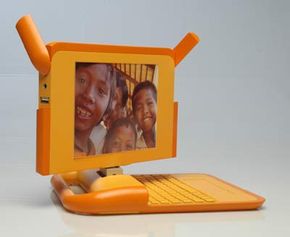June 13, 2006 | Post Archive
Updated August 31, 2006
Advertisement
The rise and fall of prices is inevitable as emerging technology arrives and older technology becomes obsolete. Since the first incarnation of personal computers, owning one is significantly less expensive than ever before. But did anyone expect a $100 laptop? I didn’t.
The $100 laptop, or more appropriately, the $145 laptop, isn’t for the average American consumer, though there’s no doubt certain domestic communities could benefit from such a bargain. The mission of the initiative, aptly named "One Laptop per Child," is to place a laptop computer in the hands of kids around the world. But why a laptop?
The non-profit association’s Web site describes its rationale: "Laptops are both a window and a tool: a window into the world and a tool with which to think. They are a wonderful way for all children to learn learning through independent interaction and exploration," said Nicholas Negroponte, co-founder of the MIT Media Lab. The laptops will be purchased by governments around the world and distributed by their ministries of education. The immediate mission is to reach the children of developing and undeveloped nations, though a commercial equivalent to the inexpensive machine could be on the horizon.
Negroponte and associates hope that the cost will gradually reduce over time, ending up somewhere around $50 by 2010. The laptop has ample processing power and features given the scope of its purpose. The Linux-based machines will come with a dual-mode display monitor and both a full-color transmissive DVD display and a reflective black and white display readable in sunlight. It will be powered by a 400Mhz AMD Geode processor, 128 MB of DRAM and boasts 512MB of flash storage — not a lot, but certainly enough for saving simple files. Each machine will also have a video/still camera, an SD card slot, stereo speakers, a line-out jack and a microphone. The 2B1 will also be VoIP-enabled.
Despite its noble intent, the initiative has drawn criticism from computing giants like Microsoft and Intel, who say the laptops are impractical. And while Negroponte dismisses the criticism, insinuating that their efforts step on the corporations' toes, they could have a point. The laptop's power supply is crank-operated, which requires users to turn the crank for six minutes for 1 hour of work time. Issues of connectivity to the Internet are also drawing skepticism. Negroponte and associates have plans to distribute inexpensive satellite dishes and servers to bring the Web into homes around the world. But if the computer has to be cranked, wouldn’t the satellite dish? And what about the server?
Children in Thailand and Nigeria are expected to receive the machines in October and November for quality testing and debugging. The first working laptops, which Negroponte calls "B-Machines," should be produced in November. To combat criticisms about testing, Negroponte says that they will be "tested to destruction" [ref]. The company plans to begin shipping laptops in the first quarter of 2007 and has a 12-month goal of 10 million laptops.
The initiative may be able to put a computer in the hands of 100 million children, but whether the project will prove to be sustainable still remains to be seen—especially in regions where many families cannot afford to send their children to school. Are the ministries of education equipped to provide tech support, and what happens if a computer is lost, stolen or broken?
Well, at least with four USB ports the kids will have somewhere to charge their iPods.
Advertisement
